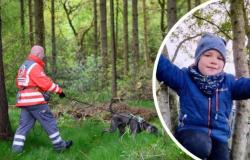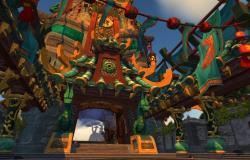The third-year student from Moldova recently gave her final presentation in front of a room full of people. In English, that is, supported with Dutch sheets for older residents who do not fully understand English.
She found it exciting, because there were not just any people in the room, but residents of the three municipalities who were eagerly awaiting the results of her research, and representatives of companies, governments and agencies.
An important meeting, which focused on the progress of the Limburg ‘Borderless Metering’ project, in which Fontys Venlo and Fontys Green Tech Lab are closely involved. All parties work together to measure air quality at a local level, with special attention to particulate matter and odor. Citizens’ concerns about their health due to activities – such as agriculture, industry and highways – in their area were the reason for this project.
Politically charged
A quite politically charged subject, Nicoleta knows, but she doesn’t have to worry about it. “It is not up to me to draw conclusions from the measurements, but to provide insight into the collected data.” And she did so in a way that received much praise during the meeting.
“I wanted to make the amount of particulate matter in the air visible so that everyone could understand it. For this I used the principle of a heat map. Such a map uses colors to show what the perceived temperature is in a particular place. For example, dark red stands for very hot and light blue for cool. I applied that to the amount of particulate matter in the air. Red represents poor air quality and blue represents good air quality.”
In order to take the measurements, particulate matter meters were installed at thirty locations among citizens in September last year, which continuously collect data. Nicoleta analyzed this data and made it visual. “Because particulate matter is so small that you can hardly see it,” she says. “The smaller, the more harmful to our health. If we want to know the air quality at a location, we have to measure the amount of particulate matter.”
Color cards
For the research, Nicoleta focused on PM10, particulate matter with a size of up to 10 micrometers, such as sea salt particles, dust and smoke. Not very small, but so small that you cannot see with the naked eye how much of this particulate matter is present in the air and whether it is harmful. “With the heat maps I made, you can see in one image whether the amount of particulate matter at a certain time meets the European guidelines.”
 By placing the images one after the other, you get an impression of the particulate matter during the day. “I made it so that you scroll through a timeline. You then see the air quality ‘moving’ every hour and you can see where it comes from and where it is going. The intention is to set up a digital platform where people can monitor the amount of particulate matter in the air, just as there are already websites for weather forecasts.”
By placing the images one after the other, you get an impression of the particulate matter during the day. “I made it so that you scroll through a timeline. You then see the air quality ‘moving’ every hour and you can see where it comes from and where it is going. The intention is to set up a digital platform where people can monitor the amount of particulate matter in the air, just as there are already websites for weather forecasts.”
The ultimate goal of the project is to find out whether certain concentrations of particulate matter are due to local sources. However, this still requires additional research. Next semester, another third-year Computer Science student, Maksym Kobzar, will take over from Nicoleta. The investigation will continue until June.
New experience
Nicoleta looks back on her research with satisfaction. “Working on an actual project was a completely new experience and it felt very good to really be able to mean something to people. So you can do very good social research with technology. Especially nowadays, there is so much technology available that we can use. We live in great times in that regard.”
Tags: social research technology
-







